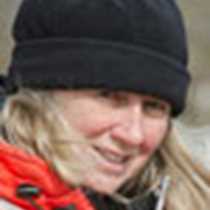Åland Islands, Finland
“It’s a small world.” We hear this statement time and time again when one meets someone who knows a relative or neighbor or when in some foreign port one surprisingly stumbles upon an acquaintance. Our minds are always open to that possibility. But for some reason we were totally unprepared to meet up with Irene here in the northern Baltic. Yes, that same Irene that many of us fled from slightly more than ten days ago or that the East Coast of North America said goodnight to in recent days. She may be drowsy after her long Atlantic crossing but we can say with some authority that she definitely was not asleep.
Heralded by the classic “red sky in the morning,” Irene swept into our awareness rapidly. As the clouds and sea took on the same luminosity, whitecaps danced upon the water and surf crashed upon the myriad of rounded granitic mounds that make up the Åland Islands. Windrows skittered from crest to crest of the waves cutting the surface into parallelograms, white on charcoal grey. The giant foghorn at the pilot station on Kobba Klintar emitted not a whisper as we dashed by, the sole occupants being hearty men but bronze in constitution. Observed by a soaring white-tailed eagle, we hid in a lee in hopes of facilitating a visit to shore but in the end we chose instead to learn about the region from the comfort of the lounge.
Swedish in language and customs, the Åland Islands are an autonomous district of Finland. They stand like sentinels at the edge of the Baltic Sea, guarding the southern entrance to the Gulf of Bothnia. Although the convoluted channel is well known today, it was not so for generations past. And yet, here was the home for the last of the majestic sailing vessels that dashed around the “horns,” racing to carry the grains of Australia to European ports. Buffeted by winds of the southern ocean and becalmed in the doldrums their hearts were with families back at home in the islands but dangers lurked even at their journey’s end. Fog or rain or squalls of snow could easily mask their way. Many hundreds of vessels lay beneath our feet as we wove our way into the port of Mariehamn. Representing them all, a member of the famous Flying-P Line, awaited us at the pier.
Fierce gusts of wind grabbed the branches of shoreline trees setting them to flailing. Rain fell horizontally as we poured up the gangway of the museum ship, the “Pommern.” Seasoned sailors that we are now, we felt not a bit of motion beneath our feet but our eyes and ears told of the gale outside. Lamps suspended from the ceiling gently swayed. Creaks and groans and the snapping of flapping pennants joined with two performers to create the music of the vessel. Sail-makers quietly stitched heavy canvas that one day might be hoisted up one of four strong masts. For now, her sails are furled but her spirit carries imaginations of young and old back to the days when only the sound of the wind and water accompanied ships at sea.
As we head back to the open seas a rainbow slides through golden light decorating the islets at the edge. The sky flares red and as darkness inches near, Irene appears to finally sleep.




